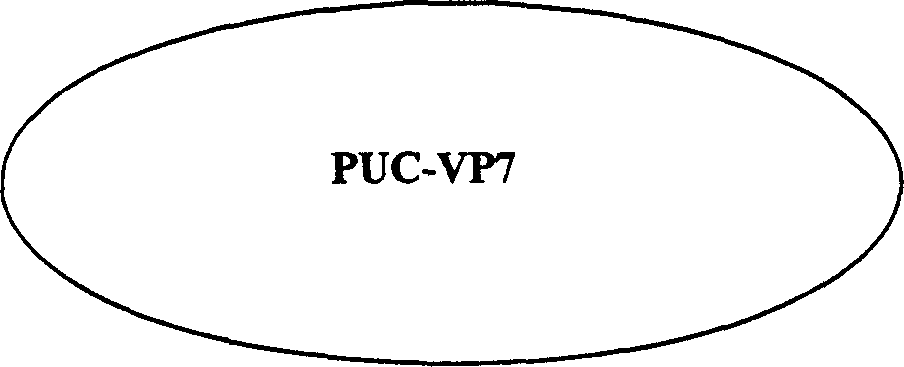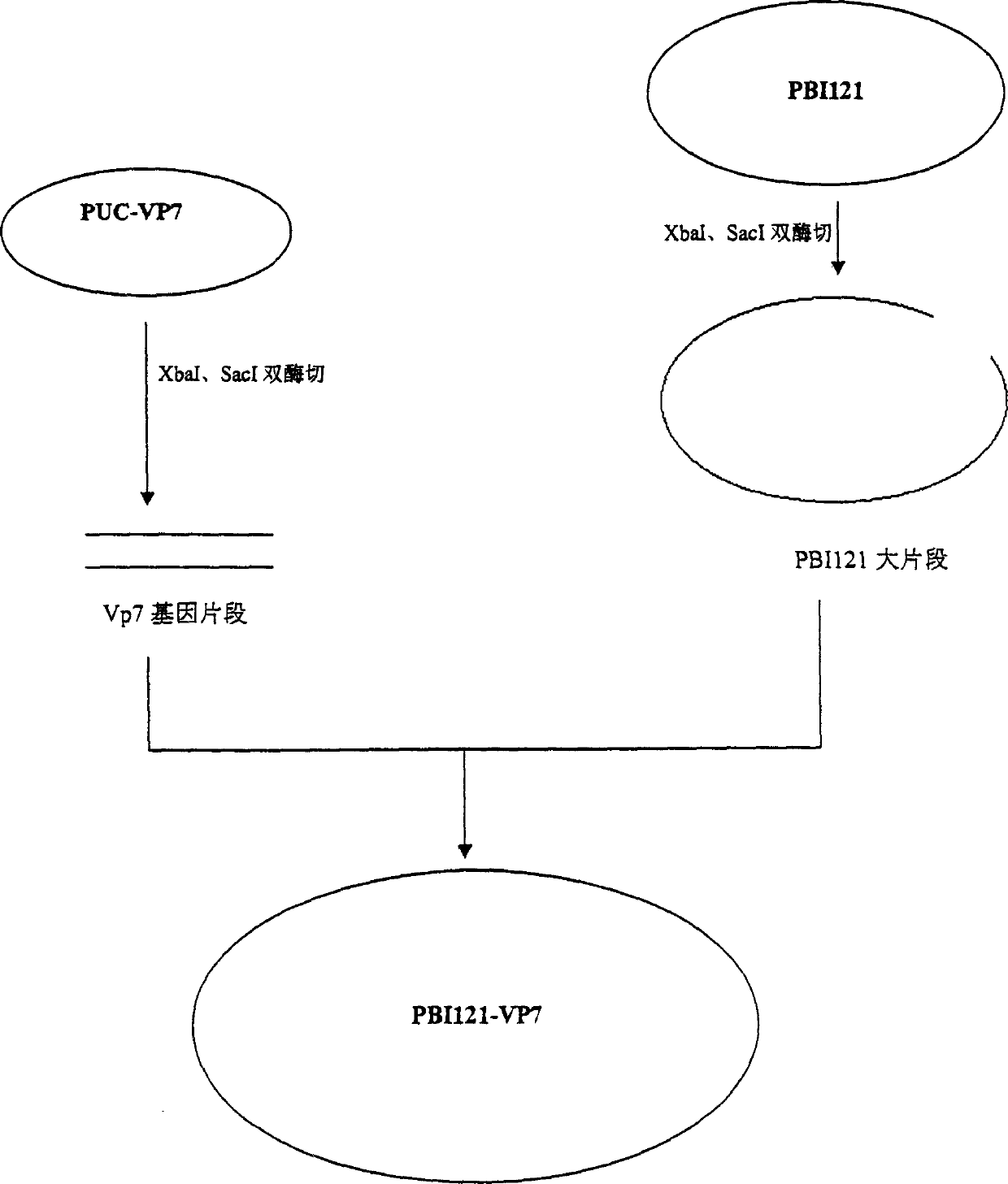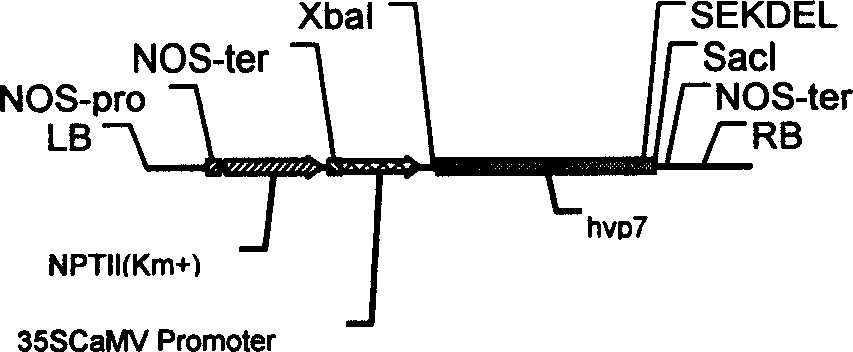Product of transegenic plant for expressing coat protein of human rotavirus and application for preventing infant diarrhea
A technology of human rotavirus and transgenic plants, applied in plant products, animal/human protein, anti-animal/human immunoglobulin, etc., can solve the problem of ineffective protection of rotavirus infection and protein glycosylation And other issues
- Summary
- Abstract
- Description
- Claims
- Application Information
AI Technical Summary
Problems solved by technology
Method used
Image
Examples
Embodiment 1
[0086] Example 1: Construction of Rotavirus Coat Protein Antigen Plant Expression Vector PBI121 / VP7
[0087]As shown in Figure 1, the total RNA of rotavirus (serotype G1) was isolated from the feces of children with diarrhea as a template, and specific primers were synthesized according to the known nucleic acid sequence of rotavirus RNA. See the sequence for the specific base sequence Seq.ID.No.1-2 in the list, and the rotavirus coat protein VP7 gene was obtained by polymerase chain reaction (PCR) amplification. The endoplasmic reticulum retention sequence SEKDEL was introduced into the 3' end primer. For the specific base sequence, see Seq.ID.No.3 in the sequence list. Using the above-mentioned PCR product that was successfully amplified as a template, the upstream primer remained unchanged and was amplified again. . The PCR product was recovered, purified, and cloned directly into the PUC-T vector, and the reverse inserted clone was selected by enzyme digestion and named P...
Embodiment 2
[0091] Example 2. Introducing the expression vector PBI121 / VP7 into Agrobacterium (A. tumefaciens)
[0092] Plasmid PBI121 / VP7 containing rotavirus coat protein antigen gene VP7 was transferred into Agrobacterium strain LBA4404 by electroporation, which was from Clonetech Company, USA. Strain LBA4404 is now widely used because it is a modified Agrobacterium that contains the complete Vir gene, but the T-DNA has been deleted. Vir gene can transregulate the transfer of T-DNA from plasmid PBI121 / VP7 to plant cells.
[0093] Centrifuge 20ml of the Agrobacterium solution with an OD value of 0.6-0.8, wash twice with deionized water, and resuspend in 1ml of 10% glycerol; add 2μl (about 50ng) of the recombinant plasmid PBI121 / VP7 to 40μl of the bacteria solution, and mix well; parameters Settings: the electroporation cup is 0.1cm, the capacitance is 25μF, the resistance is 200Ω, and the electric field strength is 18kv / cm. After the electric shock, add 0.8ml of LB and 20μl of 1M gluc...
Embodiment 3
[0095] Example 3. Agrobacterium-mediated plant genetic transformation
[0096] The genetic transformation of plants starts with the co-culture of plant tissues and organs with Agrobacterium, and after about 2 days of culture, the plant explants are transplanted into the corresponding selection medium. Plant explants can be protoplasts, callus or other organ tissues, depending on the plant. We chose cotyledon or stem segment transformation methods.
[0097] Potato sterile seedlings [the variety is Taiwanhong (Taiwanhong), provided by the Biotechnology Center of Southwest Agricultural University]. Grow in a light incubator at 23°C, supplemented by medium light intensity, cut off the top shoots every 3 weeks, and replant them in MS solid medium without any antibiotics. The potato stems that have grown for 2 weeks are the most suitable for conversion. Tomatoes (provided by Chongqing Crop Research Institute) were transformed with 7-10 days old cotyledon or hypocotyl sterile expl...
PUM
| Property | Measurement | Unit |
|---|---|---|
| Molecular weight | aaaaa | aaaaa |
Abstract
Description
Claims
Application Information
 Login to View More
Login to View More - R&D
- Intellectual Property
- Life Sciences
- Materials
- Tech Scout
- Unparalleled Data Quality
- Higher Quality Content
- 60% Fewer Hallucinations
Browse by: Latest US Patents, China's latest patents, Technical Efficacy Thesaurus, Application Domain, Technology Topic, Popular Technical Reports.
© 2025 PatSnap. All rights reserved.Legal|Privacy policy|Modern Slavery Act Transparency Statement|Sitemap|About US| Contact US: help@patsnap.com



